April 23, 2015

When it comes to 5G networks of the future, everyone wants a say.
Unlike their 3G and 4G predecessors, 5G networks are being developed around their potential use cases with a focus on how wireless operators can work with other industry verticals to meet both their needs. With 5G, the wireless operators are leading the charge, rather than following the lead of their vendor partners looking to cash in on the evolution -- or revolution, depending on the point of view. (See Why 5G Matters – Now! and 5G: What Is It & Why Does It Matter?)
As such, the number of groups working towards 5G has grown considerably over the past year or two, some working together, some ultimately competing and all trying to influence the standards process for 5G. (See 5G Use Cases, Pre-Standards Groups Proliferate .)
Figure 11: 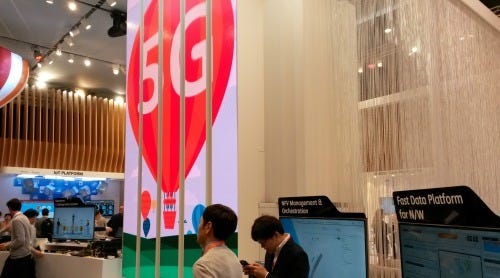
Heavy Reading Senior Analyst Gabriel Brown said back at Mobile World Congress that the proliferation of 5G groups will ultimately be a good thing this early in the process. He points out that a lot of the groups have overlapping companies or individuals in them, but all have big brains on board that will ultimately move the market forward and build out the 5G ecosystem. (See Heavy Reading Q&A: Getting to the Heart of 5G .)
To help you keep track of all the standards, research and other related groups emerging, Light Reading is starting a list of what they are, who is involved and their unique take on 5G. Here, in no particular order, are 12 groups that are working towards a 5G future, although we expect more to spring up as 5G gets more concrete going forward.
For more on 5G, visit the dedicated 5G section here on Light Reading.
3rd Generation Partnership Project (3GPP)
Figure 1: 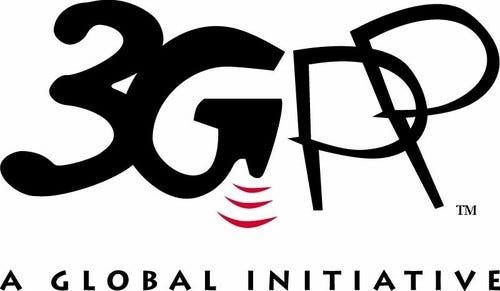
Background: The 3rd Generation Partnership Project (3GPP) is made up of the seven standards organizations that will ultimately be responsible for developing 5G's standards. Through four Technical Specification Groups -- Radio Access Networks, Service & Systems Aspects, Core Network & Terminals and GSM EDGE Radio Access Networks -- it lays out the specs for everything from what the core network will look like to its service capabilities to how it will interact with WiFi. Its goal is to make any new network both forwards and backwards compatible, which will be especially important for 5G networks, since 4G, 3G and even some 2G will still be around for years to come. (See Ready or Not, Here Comes LTE-Advanced, 5G: So Where's the US? and LTE Reaches Half a Billion Users Worldwide.)
Members: The 3GPP's members include more than 400 global telecom service providers and vendors.
5G Point of View: The 3GPP approved its work plan for 5G in March and plans to really get to work on standards for the next-generation network at its RAN workshop in September of this year. The group will submit the final specs for 5G for the International Telecommunication Union (ITU) 's IMT-2020, or International Mobile Telecommunication system, process in February 2020, which means it will have them solidified -- or "frozen" -- by December 2019. Its goal, with the help of its partners working on 5G use cases, is to determine the key RAN requirements, spectrum to be used and scope of the work to qualify a network 5G.
International Telecommunication Union (ITU)
Figure 2: 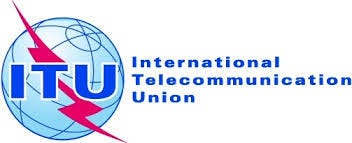
Background: The International Telecommunication Union (ITU) is the United Nations' specialized agency for information and communication technologies. While the 3GPP proposes network standards, the ITU is the group that must approve them and allocate the global radio spectrum to support them. It is made up of three sectors: radiocommunication, telecommunications standards and telecommunication development. This year, ITU-R, the radiocommunication sector, plans to finalize its vision of a 5G mobile broadband connected society. (See Spectrum Muddle at the 5G Huddle, 5G Hype: An Early Inflation and Samsung: Inching Toward 5G?)
Members: The ITU counts 193 Member States, ICT regulators, 92 leading academic institutions and 700 private companies in its membership.
5G Point of View: One of the ITU's biggest priorities is figuring what spectrum will be used for 5G networks, a topic it will explore at the World Radiocommunication Conference (WRC) in 2018 or 2019. There is currently a global debate on whether sub-6Ghz low-band spectrum or above 6Ghz high-band spectrum, which Korean operators are pursuing, is the best suited for 5G. There is much more spectrum available in the high bands, as well as higher data rights, but propagation is poorer. The low bands tend to support mobility better and is easier to implement, but it will be sharing space with LTE-Advanced. The ITU will play an important role in figuring out the spectrum potential and constraints for 5G and how it will vary across the globe. (See Ofcom Releases Its 5G mmW Band Play List.)
Mobile and wireless communications Enablers for the 2020 Information Society (METIS)
Figure 9: 
Background: The METIS 2020 Project is funded by the European Commission, coordinated by Ericsson AB (Nasdaq: ERIC) and with a task force led by test and measurement vendor Anite plc . It was formed in June 2014 as a 30-week project to develop channel models for 5G through lab tests to predict how wireless device will work in real-world conditions. In April, it wrapped up its work with a series of mathematical models for operators to evaluate spectrum and for handset manufacturers and chip makers to evaluate the performance of their prototype 5G devices. These models cover features like system performance evaluation, system optimization, radio interface simulation and prototyping, R&D testing and final product approval. (See Anite Puts Forth 5G Radio Channel Models .)
Members: During its duration, METIS had 80 full-time people dedicated to the group. In addition to Ericsson and Anite, METIS' 29 partners include Alcatel-Lucent (NYSE: ALU), Nokia Networks , Huawei Technologies Co. Ltd. , NTT DoCoMo Inc. (NYSE: DCM), Orange (NYSE: FTE), Deutsche Telekom AG (NYSE: DT), Telecom Italia (TIM) , Telefónica , manufacturers, academic institutions, representatives from the automotive industry and a research center.
5G Point of View: The METIS group isn't set up to tell operators which spectrum to deploy 5G in, but rather to help them do so in the bands they choose. It has been studying the above-6Ghz millimeter wave frequencies, which are lesser known than the sub-6Ghz bands. It says its goal is "to provide an important platform for a European-led early global consensus on fundamental questions connected to the development of the future mobile and wireless communications system, and pave the way for future standardization."
Next page: NGMN, 5G-PPP, 4G Americas
Next Generation Mobile Networks (NGMN) Alliance
Figure 3: 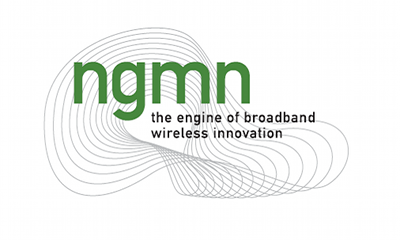
Background: The Next Generation Mobile Networks (NGMN) Ltd. was formed by a group of wireless operators in 2006 as a way to evaluate technologies, influence the standards process and form a cohesive view of next-generation networks. It describes its vision as expanding "the communications experience by providing a truly integrated and cohesively managed delivery platform that brings affordable mobile broadband services to the end user with a particular focus on LTE and LTE-Advanced." It turned much of its attention to 5G in early 2014, culminating with the presentation of a 125-page white paper at Mobile World Congress this year outlining 25 use cases for the future network. (See NGMN Chairman Outlines His 5G Vision, NGMN Releases Early 5G Vision and NGMN Kickstarts 5G Initiative.)
Members: The NGMN Alliance currently has 84 members, including 25 mobile operators, 34 vendors and manufacturers and 25 universities or non-industrial research institutions from across the globe. Most of the major global mobile operators are represented on its board, led by Chairman Bruno Jacobfeuerborn, who also serves as the group CTO for Deutsche Telekom AG (NYSE: DT). Jacobfeuerborn said at MWC that the goal of the organization is to create a "truly global truly global ecosystem, free of fragmentation and open for innovation."
5G Point of View: The NGMN Alliance is approaching 5G from what use cases it can enable, which is an important distinction from how LTE and 3G networks were planned. By doing it this way, it hopes to influence how the networks are deployed and what radio technologies they include. The group will spend the next 12 months to 18 months working on a unified global standard for 5G.
"5G is an end-to-end ecosystem to enable a fully mobile and connected society," Jacobfeuerborn said at MWC. "It involves value creation to customers and partners for existing and emerging use cases."
5G-PPP
Figure 4: 
Background: Established in late 2013, the 5G-PPP (5G Public Private Partnership) describes itself as a joint initiative between the European Commission and the region's ICT industry and counts some of Europe's biggest network equipment suppliers and service providers as members. It appears to have taken shape at the urging of Neelie Kroes, the European Commission's former digital agenda commissioner, who has argued that 5G represents an opportunity for European companies to seize the technology initiative from North America and Asia, which have pioneered the rollout of 4G. It does, however, include the European divisions of a number of international players from those regions, including China's Huawei and Japan's NEC. Expounding on its mission, the 5G-PPP says it aims to drive the development of 5G standards and specifically aims to "develop and exploit at least 20% of the 5G standards essential patents." (See 5G Use Cases, Pre-Standards Groups Proliferate and 5G by 2020: Too Much, Too Soon?)
Members: ADVA Optical Networking , Alcatel-Lucent (NYSE: ALU), Astrium Satellites, Atos, CEA-LETI, Centre Tecnologic de Telecomunicacions de Catalunya (CTTC), Consorzio Nazionale Interuniversitario per le Telecomunicazioni (CNIT), Deutsche Telekom AG (NYSE: DT), Docomo Communications Laboratories Europe GmbH (Docomo Euro-Labs) , Fundacion IMDEA Networks, Ericsson AB (Nasdaq: ERIC), Huawei Technologies Düsseldorf GmbH, IBM Research, Intel Mobile Communications, Instituto de Telecomunicações, Integrasys SA, INTERINNOV, IST -- University of Lisbon, M.B.I. S.R.L., Nextworks s.r.l., NEC Europe , Nokia Networks , Orange Labs, Portugal Telecom SGPS SA (NYSE: PT), Quobis, SES S.A. (Paris: SESG), Telecom Italia (TIM) , Samsung Electronics Research Institute Ltd. (SRUK), Sequans Communications , Telefónica I+D, Telenor Group (Nasdaq: TELN), Telespazio, Thales Alenia Space, TNO , Turk Telekomünikasyon A.Ş., University of Bologna -- DEI
5G Point of View: With its distinctly European focus, the 5G-PPP says 5G technology will have to meet a number of important criteria. These include providing 1,000 times more capacity than mobile networks could offer in 2010. It also wants to reduce what it calls the average service creation time cycle from 90 hours to 90 minutes and ensure that 5G technology is far more energy-efficient than its network predecessors. Meanwhile, the use of network technologies that can easily be scaled up to meet demand should reduce network management operating costs by at least 20% compared with today's levels.
4G Americas
Figure 5: 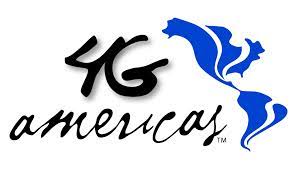
Background: This group started life as 3G Americas, LLC in 2001 but now does business as the 4G Americas group, headquartered in Bellevue, Wash. It is an industry body made up of both service providers and vendors, and it represents the 3GPP.
It describes itself as focused on the advancement and adoption of 4G, 5G and beyond in the Americas. This encompasses a pan-American focus covering North American and Latin American countries.
Members: Alcatel-Lucent (NYSE: ALU), America Movil, AT&T Inc. (NYSE: T), Cable & Wireless Communications , Cisco Systems Inc. (Nasdaq: CSCO), CommScope Inc. , Entel, Ericsson AB (Nasdaq: ERIC), HP Inc. (NYSE: HPQ), Intel Corp. (Nasdaq: INTC), Mavenir Systems Inc. , Nokia Corp. (NYSE: NOK), Qualcomm Inc. (Nasdaq: QCOM), Sprint Corp. (NYSE: S), Telefónica , T-Mobile US Inc.
5G Point of View: The group is stressing the importance of the countries of the Americas being involved with -- and investing -- the development of 5G. Europe and Asia are generally perceived to have got an earlier start on the 5G R&D trail.
Next page: GSMA, 5G:haus, CableLabs + NYU
GSMA
Figure 6: 
Background: Founded in 1982 as the initial 2G GSM technology developed, the GSM Association (GSMA) is a trade group centered around operators worldwide using the standard. The London-based group has around for the development of 2G, 3G and 4G networks. There's an extensive history lesson here.
Members: The GSMA claims over 800 members to date, with a full list here.
5G Point of View: The GSMA says that it will work on areas such as the definition of roaming and interconnect in 5G, and the identification and alignment of suitable spectrum bands. Once a stable definition of 5G is reached, the GSMA will work with its members to identify and develop commercially viable 5G applications. The organization says that the jury is still out on whether 5G will represent an incremental change from 4G LTE or a wholesale change.
5G:haus
Background: Perhaps the newest 5G body to appear on the scene, 5G:haus is an innovation lab that was set up by German telecom incumbent Deutsche Telekom in March 2015. Like other 5G organizations, it aims to spearhead the development of new standards and foster innovation, making use of Deutsche Telekom's European assets and customer base in its research activities. The German operator says it will work with a broad range of partners, including research companies, start-ups and established vendors, on designing 5G technology from a "holistic, customer-oriented perspective." Deutsche Telekom clearly hopes to benefit from working with partners at its own facilities, and with its own customers, in ways that are not possible through involvement with groups like the 5G-PPP and NGMN. (See Eurobites: Telefónica Faces Tax Fine in Peru and Deutsche Telekom Opens 5G:haus.)
Members: Ericsson AB (Nasdaq: ERIC), Fraunhofer Institute , German Research Center for Artificial Intelligence -- DFKI, Huawei Technologies Co. Ltd. , Kumu Networks, Moogsoft, Nokia Corp. (NYSE: NOK), Qualcomm Inc. (Nasdaq: QCOM), RF DSP, Samsung Electronics Co. Ltd. (Korea: SEC), SoftRAN Initiative at Stanford University, University of Kaiserslautern, ZTE Corp. (Shenzhen: 000063; Hong Kong: 0763)
5G Point of View: 5G:haus does not have the detailed vision statement or list of objectives of older 5G associations, but its views about the next-generation technology clearly stem from Deutsche Telekom, which has been one of the most prominent players in the NGMN and is also involved in the 5G-PPP. The unique selling point seems to be the focus on the practical application of 5G in real-world European settings. In its statement about the group, Deutsche Telekom says it will be able to show off the fruits of its early 5G research in different parts of Europe, implying that it wants to gauge the feedback of a variety of customer groups and use this intelligence to inform its 5G thinking. "The lab will… provide a platform to engage with our customers at a very early stage of 5G development," said Bruno Jacobfeuerborn, Deutsche Telekom's CTO, in a statement.
CableLabs 5G (with NYU)
Background: CableLabs believes the cable industry is well-positioned to facilitate future wireless networks based on millimeter wave technology. With the high density and high capacity backhaul requirements, and industry deployments of WiFi networks where the majority of wireless data is consumed, millimeter wave becomes a natural evolution of the cable broadband network and cable WiFi networks as performance requirements rise. There are so many different interesting use cases, ranging from wireless fiber extensions to wireless drops or fast side-loads of content to mobile devices and distribution of media in the home and office, that this is an area of future strategic value to the industry. CableLabs views NYU as a great partner whose research is establishing the art of the possible in this spectrum. NYU also played an instrumental role in driving industry interest in this spectrum. (See Light Reading's Spectrum2025 Brings the Industry Together to Discuss Disruption in Spectrum Use and The Many Faces of 5G .)
Members: In addition to Cable Television Laboratories Inc. (CableLabs) , the group includes Samsung Corp. , Qualcomm Inc. (Nasdaq: QCOM), Straight Path Communications Inc. , Level 3 Communications Inc. (NYSE: LVLT), Nokia Corp. (NYSE: NOK), Huawei Technologies Co. Ltd. , AT&T Inc. (NYSE: T), Intel Corp. (Nasdaq: INTC), Keysight, National Instruments Corp. and Ericsson AB (Nasdaq: ERIC).
5G Point of View: WiFi small cells and the cable fiber and HFC networks are optimal for 5G small cell backhaul. In fixed broadband, we are moving into the multi-Gbit/s space today with DOCSIS 3.1 and PON networks. Wireless access demand should drive the same dynamics of increasing performance so that consumers have the same great experience inside and outside the home. It will require both significant spectrum and high density spatial re-use to achieve that level of wireless performance. The only way to find the quantity of spectrum needed to hit those speeds is to move up to the mmwave band. There are a lot of millimeter wave spectrum options, but the technical challenges are high. NYU is a clear thought leader and a state-of-the-art research institution working to solve these difficult problems.
Next page: 5G Development Centre, NIST's Wireless Networks Division, 5GIC
5G Development Centre
Figure 10: 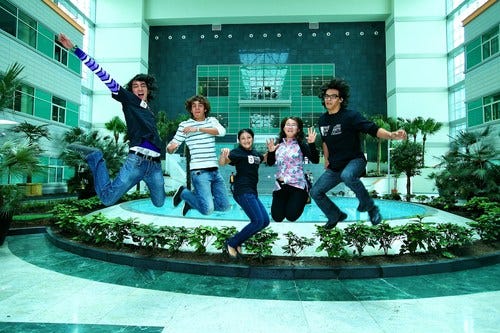
Background: The 5G Development Centre is working on new components and techniques to achieve 5G's potential of 800 Gbps per second of speed and thousand-fold increase in capacity. It's headed by Professor Corbett Rowell, the first western research director at China Mobile Communications Corp. ’s Research Institute in Beijing. Nutaq Innovation Inc., a Canadian vendor, is providing key equipment for the research (See 5G Development Centre Opens and What China Mobile Wants From 5G).
Participants: China Mobile; Nazarbayev University, Kazakhstan; Hong Kong University of Science and Technology; Nutaq Innovation
5G Point of View: To achieve 5G's potential, new components and techniques are needed for improving spectral efficiency, accommodating more users and connected devices, increasing data rates and reducing power consumption. Research at the 5G Development Centre will initially focus on testing the Titan MIMO system developed by Nutaq Innovation and verifying the conclusions of a recently published paper about hybrid beamforming algorithms for massive MIMO systems produced by the team at Nazarbayev University and their long-time research partners at the China Mobile Research Institute (CMRI). Massive MIMO has been extensively researched but not fine-tuned or tested in real-world conditions. Titan MIMO, developed by Nutaq, is a 5G testbed that can support up to 1,000 transceivers or antenna elements and enables real-time wideband Massive MIMO implementation.
NIST's Wireless Networks Division
Figure 7: 
Background: The National Institute of Standards and Technology (NIST), an agency of the US Department of Commerce, has identified "Fifth Generation Mobile Networks" as one of the core programs at its Gaithersburg, Md.-based Wireless Networks Division, which is part of NIST's Communications Technology Laboratory (CTL). (See Spectrum Muddle at the 5G Huddle.)
The CTL, which undertakes theoretical and experimental research in networks, systems, protocols and components, has three specific projects that comprise its 5G Mobile Networks research program.
5G Point of View: As part of its work, the NIST team has been working with the FCC to study the potential use of unlicensed spectrum (specifically the U-NII-2B and U-NII-4 bands) for 5G services. It has also developed a high frequency signal source system that can be used as part of 5G test and measurement projects. The system, as this NIST announcement explains, has been demonstrated at 44GHz and 94GHz.
5G Innovation Centre (5GIC)
Figure 8: 
Background: The 5G Innovation Centre (5GIC) centers around a testbed for 5G technology prototypes at the University of Surrey, England, that is scheduled to be up and running by September 2015. It’s part of the University’s Institute for Communications Systems, a group that in past decades contributed significantly to 2G, 3G and 4G development. But, the focus isn’t all academic -- 5GIC is partially funded by the Higher Education Funding Council for England, but it is three-quarters funded by its 11 corporate founding members, a cross-industry group that includes four service providers. (See 5GIC Shares Vision With Industry Partners, Ascom Joins 5G R&D Project and Calling All Big Brains: Get the Lowdown on 5G.)
Founding members: BT Group plc (NYSE: BT; London: BTA), Telefónica , Vodafone Group plc (NYSE: VOD), EE , Huawei Technologies Co. Ltd. , Samsung Corp. , Fujitsu Ltd. (Tokyo: 6702; London: FUJ; OTC: FJTSY), Aircom International Ltd. , British Broadcasting Corp. (BBC) , Cobham, Rohde & Schwarz GmbH & Co. KG .
Other members:Ascom , Catapult Communications Corp. (Nasdaq: CATT), Chemring Technology Solutions, Industrial Technology Research Institute, Mycom OSI, Ofcom .
5G Point of View: The 5GIC is focused on pre-standard prototype technology efforts, claiming to be the only large-scale testbed of its kind in the UK. One of its key tenants is on enabling intelligent network and device integration that gives users “the impression of unlimited data capacity.” Also, while some technology trade groups are weighted with and influenced by members from one segment, such as the vendor community, 5GIC seems to be a rare and fairly balanced collaboration involving service providers, vendors, academia, a broadcaster and even a regulatory agency.
-- The Editors, Light Reading
You May Also Like









